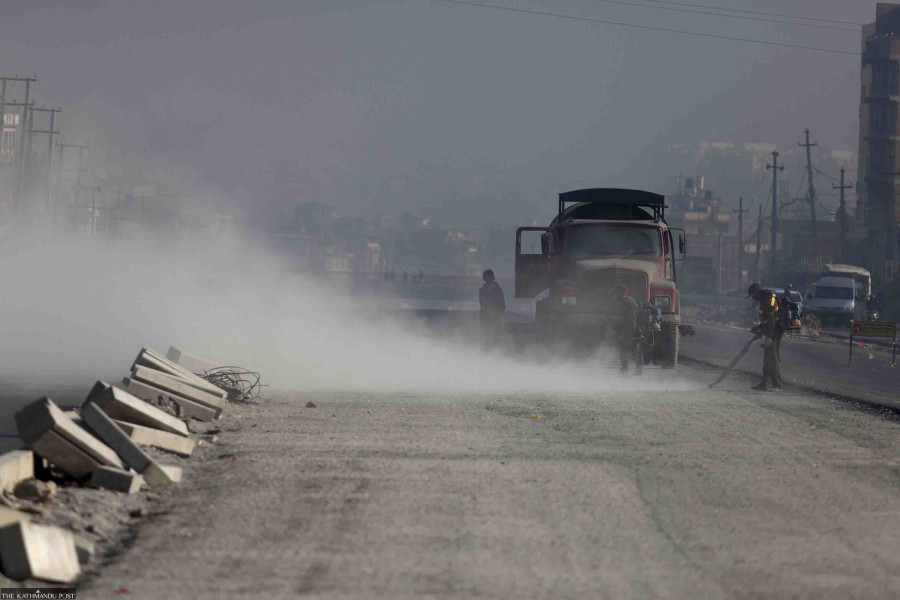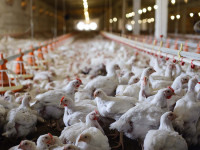Money
Ring road expansion project to emphasise safety
The 8.2-km Kalanki-Basundhara section will be widened during the second phase.
Post Report
The second phase of the ring road expansion project in Kathmandu will adopt a new infrastructure design to better address the wellbeing and safety of the public, officials say.
The planned design changes follows widespread criticism as the widened road section built under the first phase that was implemented with Chinese assistance had turned into a death trap.
A safe road has safety features like sidewalks, zebra crossings, overhead bridges, parking facilities and drainage designed to make the infrastructure comfortable for all people, experts said.
Officials have recommended some particular changes in the design under which the 10.5-km Koteshwor-Kalanki section was carried out in the first phase.
The Chinese contractor tasked with the construction is yet to approve the new design.
“Initially, the first and second phases of the expansion project were to be carried out under the same design,” said Sumitra Adhikari, spokesperson for the Kathmandu Ring Road Improvement Project. “But we have recommended some changes in the design for the second phase.”
The project office has written to the Chinese government on the matter through the Ministry of Physical Infrastructure and Transport, she said. “The design is yet to be approved. The recommendations were sent about a month ago,” Adhikari added.
During the second phase, work will be done on the 8.2-km Kalanki-Basundhara section.
The design of the expanded Koteshwor-Kalanki section was criticised for several flaws following a spate of fatal accidents. The road section lacked zebra crossings, traffic lights, streetlamps, cycle and wheelchair lanes, and designated parking.
Civil society exerted pressure on the government as the road was risky for motorists, cyclists, people with disabilities and pedestrians. Some improvements were then made, officials said.
The Chinese government officially handed over the Koteshwor-Kalanki road section to Kathmandu Ring Road Improvement Project in January 2019.
Bijay Jaisi, chief of the Development Cooperation Implementation Division under the Department of Roads, told the Post that the Chinese side had started working on the new design.
One of the key changes recommended by the Nepali side, according to Jaisi, is related to the drainage system.
“Drainage has emerged as a major issue at the Koteshwor-Kalanki section during the monsoon,” said Jaisi. “We have increased the length of the longitudinal drainage in the second phase.”
Another major change will be in the design of the lanes.
“Unlike the eight-lane Koteshwor-Kalanki section, the Kalanki-Basundhara section will have a 3-metre-wide median strip with four lanes on each side. It will come in handy for building any overpass at the section,” Jaisi said.
“We have also demanded the inclusion of a utility corridor to prevent disruption to the electricity poles and water pipes, among other things, in the future,” Jaisi added. “The Chinese has said it will require a high-level discussion.”
Nepal has also asked the Chinese government to construct vehicle underpasses or overpasses at three or four places where radial roads meet the section and at areas favoured by the terrain. Jaisi said the Chinese side had not given any confirmation.
Originally, the Department of Roads, the implementing agency, had planned to start the second phase of the expansion project in October 2018. Consequently, the Roads Department started vacating buildings and removing structures at the construction site, but the Chinese side did not show up due to the Covid-19 pandemic.
The project was further delayed in the absence of communication and coordination between the two sides. According to Jaisi, nearly 90 percent of site clearance work has been completed.
“Delays occurred especially because of a temple at Gongabu and a police post at Basundhara. While the temple has been relocated, the police post is yet to be moved,” said Jaisi.
While China will work on the main eight lanes, Nepal will build the service tracks on either side.
“We had requested the Chinese side to construct the service tracks too, but they were unwilling to do it,” said Jaisi. “The involvement of many parties in the same project causes complexities.”
The government has allocated around Rs600 million in the budget of the current fiscal year for the Nepali side to carry out the second phase of the expansion work, according to Baburam Sapkota, chief of the Kathmandu Ring Road Improvement Project.
“The project has achieved around 60 percent physical and 50 percent financial progress so far,” said Sapkota. “Payment is being made for the completed work.”
Adhikari from the Kathmandu Ring Road Improvement Project said the Nepali side was currently installing drainage pipes.




 16.12°C Kathmandu
16.12°C Kathmandu












%20(1).jpg&w=300&height=200)
